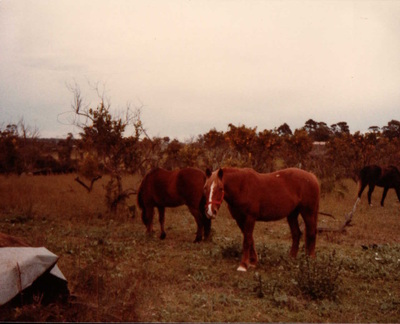The Boongala Story
Mal and Jenny Johnston operated a native plant nursery called Annangrove Grevilleas, in Annangrove Road, Kenthurst, between 1981 and 2005. While working this nursery they were creating Boongala Gardens and Rainforest, hoping to create a suitable environment for birds, native bees, possums, and other wildlife.
Boongala Gardens are dedicated to Sid Cadwell, Jenny’s uncle. Sid was a native plant pioneer and owned ‘Boongala Gardens’ nursery in Annangrove for many years. Boongala, is an Aboriginal word which means shaded place. Sid is remembered by his Grevilleas, Sid Cadwell, Boongala Spinebill and Jessie Cadwell.
The gardens were planned, shaped and planted on land which had been used by their family, the Cadwell’s, for farming since 1940. This land was a citrus orchard and open range poultry farm until 1970. The property lay idle for the next ten years, in which time it became baron and lifeless, some areas were overrun by large and small leaf privet trees, lantana, and many other weeds. This noxious vegetation was cleared by hand.
The first plantings were the Eucalyptus, Angophora and Turpentine trees which are dotted throughout the property to slow the wind and create shade. Casuarina stands were planted for wind breaks, and to attract black cockatoos that feed on the nuts of these, and the cones of the Banksias.
The outer garden beds are raised and planted with Grevilleas and Banksias to attract honeyeaters, lorikeets and parrots. These raised outer gardens act as a wind barrier for the inner gardens, and create protected grassy areas for finches and wrens.
Boongala Gardens are dedicated to Sid Cadwell, Jenny’s uncle. Sid was a native plant pioneer and owned ‘Boongala Gardens’ nursery in Annangrove for many years. Boongala, is an Aboriginal word which means shaded place. Sid is remembered by his Grevilleas, Sid Cadwell, Boongala Spinebill and Jessie Cadwell.
The gardens were planned, shaped and planted on land which had been used by their family, the Cadwell’s, for farming since 1940. This land was a citrus orchard and open range poultry farm until 1970. The property lay idle for the next ten years, in which time it became baron and lifeless, some areas were overrun by large and small leaf privet trees, lantana, and many other weeds. This noxious vegetation was cleared by hand.
The first plantings were the Eucalyptus, Angophora and Turpentine trees which are dotted throughout the property to slow the wind and create shade. Casuarina stands were planted for wind breaks, and to attract black cockatoos that feed on the nuts of these, and the cones of the Banksias.
The outer garden beds are raised and planted with Grevilleas and Banksias to attract honeyeaters, lorikeets and parrots. These raised outer gardens act as a wind barrier for the inner gardens, and create protected grassy areas for finches and wrens.






